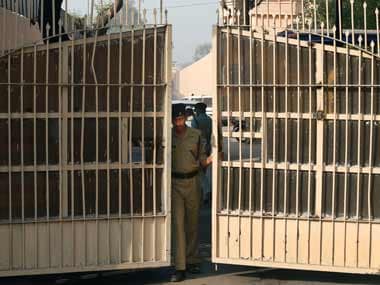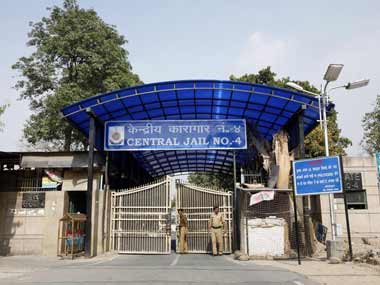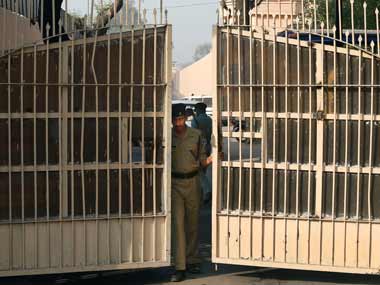by Praveen Swami Even as we engage in an orgy of hand-wringing over the suicide—or murder—of alleged rapist Ram Singh in Delhi’s Tihar Jail, there is one fact that has passed unnoticed: life in Indian prisons is a good deal safer than life outside of it. Mr Singh’s life in prison, the figures suggest, wasn’t significantly more horrible than that of Indians outside of it. There may be no cause to rejoice Mr Singh’s death—but there is even less to reinvent him as a victim. For Indians, conditioned by images of jails as places where villainous wardens with improbable moustaches flog good-looking young men fighting ‘The System’, this will be a deeply counter-intuitive proposition. Facts, though, rather than our fantasies, ought inform debate Mr Singh’s death has sparked off. Indians, firstly, are less likely to commit suicide in prison than outside of it. The
National Crime Records Bureau
, in its
2011 annual report on prison statistics
, reported that 68 prisoners—both convicts and under-trials—had committed suicide. The prison population, on December 31, 2011, stood at 372,926. Though the prison population fluctuates constantly, this number allows us to arrive at a rough prison suicide rate of 18.23—lower than Patel’s low estimate. [caption id=“attachment_656781” align=“alignleft” width=“380”]
 Are prisoners in jail safer than people outside? AP[/caption] Because of the stigma attached to suicide, Indian families rarely report it as such—a fact which makes National Crime Records Bureau data less than useful. However, in a seminal survey published in The Lancet
last year, Vikram Patel and others determined that 3% of all deaths of Indians over 15 years old were suicides. The survey suggested a suicide rate—the number of suicides per 100,000 population—ranging between 18.9 and 23.5, or an average of 22.0—one of the highest in the world. It ought not, then, surprise us if Ram Singh—driven to depression by
sexual attacks by fellow prisoners
, with a long history of
psychopathic violence
, and facing a death sentence—did kill himself. Plenty of Indians, in and outside prison, quite clearly do so every day with less cause. It ought not surprise, either, if his fellow-prisoners decided to do what so many other Indians called for. Prisoners, though, are statistically much less likely to end up murdered than the rest of us. The National Crime Records Bureau recorded 34,305 murders in 2011. India had a population that year,
according to the World Bank
, of 1,241,491,960. That means the murder rate—the number of murders per 100,000 population—was 2.7. The
United Nations Office on Drugs and Crime
, UNDOC, aggregating the murder rate for 1995-2011, puts that number at 3.4. In Indian prisons, just eight of the entire prison population were murdered—a rate of 2.14. Even if one adds to that the two prisoners killed in firing by police, on the grounds that these may be murders, the rate goes up to 2.68. This is still below the national homicide rate that year. This is all the more extraordinary if one considers that 58% of all convicts in Indian prisons—64,954 out of 111,987—are serving time for murder. Bar the possibility that incarceration turns murderers into saints, this would suggest prison authorities are doing a fairly good job. For those who lament growing levels of violence in our society, parenthetically, it is worth noting India’s homicide rates are, at worst, mid-range. In India’s immediate neighbourhood, UNDOC puts the murder rate for Pakistan at 7.8 Bhutan scores 1.0, perhaps because of happiness—but then, so does China, perhaps because of its enthusiasm for the death penalty. However, Russia is up there at 10.2, and the United States of America at 4.2. There’s no shortage of anecdotal evidence, of course, that some kinds of prisoners—among them, sex offenders and the very young, suffer hideous sexual violence. Little of this is reported, and a prisoner’s chance of getting justice is approximately zero. Prison populations, though, aren’t unique sites of such violence.
In a 2007 government survey
, one in twelve Indian children reported being subjected to sexual violence; what happens in the community also happens in prison. Similar violence also appears to exist across cultures, and in much better-resourced prison systems.
In a 2000 paper
, researchers Cindy Struckman-Johnson and David Struckman-Johnson reported 21% of inmates they surveyed reported being raped. [caption id=“attachment_656788” align=“alignright” width=“380”]
Are prisoners in jail safer than people outside? AP[/caption] Because of the stigma attached to suicide, Indian families rarely report it as such—a fact which makes National Crime Records Bureau data less than useful. However, in a seminal survey published in The Lancet
last year, Vikram Patel and others determined that 3% of all deaths of Indians over 15 years old were suicides. The survey suggested a suicide rate—the number of suicides per 100,000 population—ranging between 18.9 and 23.5, or an average of 22.0—one of the highest in the world. It ought not, then, surprise us if Ram Singh—driven to depression by
sexual attacks by fellow prisoners
, with a long history of
psychopathic violence
, and facing a death sentence—did kill himself. Plenty of Indians, in and outside prison, quite clearly do so every day with less cause. It ought not surprise, either, if his fellow-prisoners decided to do what so many other Indians called for. Prisoners, though, are statistically much less likely to end up murdered than the rest of us. The National Crime Records Bureau recorded 34,305 murders in 2011. India had a population that year,
according to the World Bank
, of 1,241,491,960. That means the murder rate—the number of murders per 100,000 population—was 2.7. The
United Nations Office on Drugs and Crime
, UNDOC, aggregating the murder rate for 1995-2011, puts that number at 3.4. In Indian prisons, just eight of the entire prison population were murdered—a rate of 2.14. Even if one adds to that the two prisoners killed in firing by police, on the grounds that these may be murders, the rate goes up to 2.68. This is still below the national homicide rate that year. This is all the more extraordinary if one considers that 58% of all convicts in Indian prisons—64,954 out of 111,987—are serving time for murder. Bar the possibility that incarceration turns murderers into saints, this would suggest prison authorities are doing a fairly good job. For those who lament growing levels of violence in our society, parenthetically, it is worth noting India’s homicide rates are, at worst, mid-range. In India’s immediate neighbourhood, UNDOC puts the murder rate for Pakistan at 7.8 Bhutan scores 1.0, perhaps because of happiness—but then, so does China, perhaps because of its enthusiasm for the death penalty. However, Russia is up there at 10.2, and the United States of America at 4.2. There’s no shortage of anecdotal evidence, of course, that some kinds of prisoners—among them, sex offenders and the very young, suffer hideous sexual violence. Little of this is reported, and a prisoner’s chance of getting justice is approximately zero. Prison populations, though, aren’t unique sites of such violence.
In a 2007 government survey
, one in twelve Indian children reported being subjected to sexual violence; what happens in the community also happens in prison. Similar violence also appears to exist across cultures, and in much better-resourced prison systems.
In a 2000 paper
, researchers Cindy Struckman-Johnson and David Struckman-Johnson reported 21% of inmates they surveyed reported being raped. [caption id=“attachment_656788” align=“alignright” width=“380”]
 Suicide rates in Indian jails were not too high. Reuters[/caption] It could be argued, of course, that prisons, being a controlled environment, ought not have suicides and murders at all. These arguments are generally made by people who have no idea how hard is to control an often violent population living in highly unnatural circumstances.
Figures
compiled by the
United States Bureau of Justice
are illuminating. From 2001-2006, 16 of every 100,000 prisoners in that country committed suicide. This was marginally lower than the Indian rate—but then, so is the United States’ suicide rate among the general population. More important, the US prison homicide rate was 4—much higher than India. Finally, incarcerated Indians don’t seem to be dying off faster than free Indians. In 2011, the NCRB records, 1,244 prisoners died of natural causes—3.33 of every 1,000 jail population. The
Census of India records
that 7.2 of every 1,000 Indians die each year. It also states that 78.9% of all Indians who die each year are in the age-group 15-60+, roughly similar to the age-profile of the prison population. That gives us 5.11 deaths per 1,000 population of free citizens. For obvious reasons, this is a very inadequate data-set—but, at first glance at least, doesn’t suggest illness or malnutrition are any more endemic in Indian prisons than outside of them. Prisoners may get awful food, but food none the less; prisoners have access to primitive healthcare, but healthcare none the less; prisoners have terrible shelter, but shelter none the less.
Suicide rates in Indian jails were not too high. Reuters[/caption] It could be argued, of course, that prisons, being a controlled environment, ought not have suicides and murders at all. These arguments are generally made by people who have no idea how hard is to control an often violent population living in highly unnatural circumstances.
Figures
compiled by the
United States Bureau of Justice
are illuminating. From 2001-2006, 16 of every 100,000 prisoners in that country committed suicide. This was marginally lower than the Indian rate—but then, so is the United States’ suicide rate among the general population. More important, the US prison homicide rate was 4—much higher than India. Finally, incarcerated Indians don’t seem to be dying off faster than free Indians. In 2011, the NCRB records, 1,244 prisoners died of natural causes—3.33 of every 1,000 jail population. The
Census of India records
that 7.2 of every 1,000 Indians die each year. It also states that 78.9% of all Indians who die each year are in the age-group 15-60+, roughly similar to the age-profile of the prison population. That gives us 5.11 deaths per 1,000 population of free citizens. For obvious reasons, this is a very inadequate data-set—but, at first glance at least, doesn’t suggest illness or malnutrition are any more endemic in Indian prisons than outside of them. Prisoners may get awful food, but food none the less; prisoners have access to primitive healthcare, but healthcare none the less; prisoners have terrible shelter, but shelter none the less.
The arithmetic isn’t complex, and neither is the underlying logic: the system has an incentive to keep prisoners alive. Prisoners who die, among them Mr Singh, mean enquiries, paperwork, and magisterial investigations. This, sadly, isn’t true for the rest of us.
)